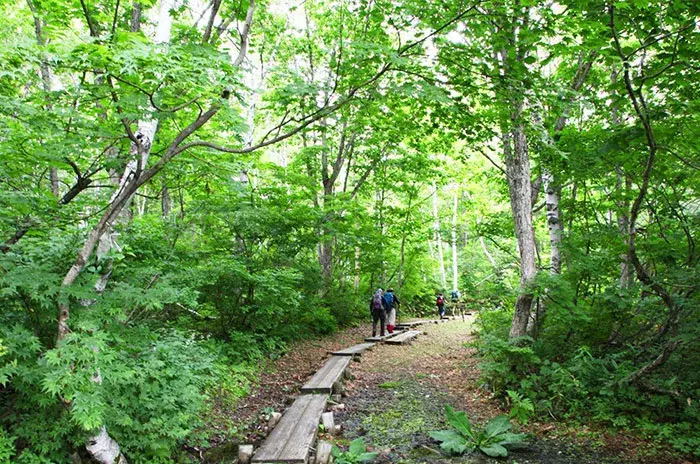
The wind in the trees, the leaves crunching underfoot, the song of a bird in the distance: walking through a forest is a subtle, yet powerful, experience. It’s no surprise that the forest has been considered a place for escape, healing, and transformation since ancient times in many cultures. But it’s only recently that modern science has proven what we always suspected: spending time in the forest can heal what ails you.
Today, people around the world are discovering the practice of Japanese shinrin-yoku. Translated as “forest bathing” (or most literally, “being in the atmosphere of the forest”), shinrin-yoku has deep roots in Japan’s Buddhist and Shinto traditions, but the term was only coined in 1982 by Japan’s Ministry of Agriculture, Forestry, and Fisheries. At the time, high-stress office culture and claustrophobic cities were starting to take their toll on citizens’ health, and the Ministry saw a chance to simultaneously help urbanites de-stress, and communicate the importance of forests in society by formalizing the concept of forest therapy. Thus, shinrin-yoku was born.
As the practice caught on, more scientists found that spending time in a forest, aimlessly wandering, listening, breathing, and being, could have even deeper health benefits than merely “relieving stress.” Many plants and trees emit phytoncides, organic compounds that helps protect them from illness and insects, and that also give a forest its unique aroma. Studies have shown in particular that mature stands of Japanese cypress (hinoki) and Japanese cedar (sugi) emit levels of phytoncides that lower blood pressure and increase the production of natural killer cells (cells to fight off infections and cancer). More generally, shinrin-yoku has been found to reduce depression, anxiety, fatigue, insomnia, and chronic pain in individuals. Many large corporations such as Nissan and Mazda have organized shinrin-yoku for their employees, and doctors and the health insurance system view it as a useful therapy. Since 2006, the Forest Therapy Society began registering official “forest therapy bases” across the country, from snowy Hokkaido to tropical Okinawa (there are now 62). These locales have been vetted to make sure there are no environmental pollutants in the area and factors such as access for people with disabilities, and then tested to gauge their actual positive impact on visitors’ health.
Though not everyone can travel to a Japanese forest, luckily shinrin-yoku can be experienced in forests far and wide. Books, articles, videos, and passionate followers have helped to share the concept worldwide, and now even Kate Middleton, the Duchess of Cambridge, is a fan (she cited shinrin-yoku as her inspiration for a garden she co-designed at the 2019 Chelsea Flower Show in the UK). Some have quipped that shinrin-yoku is “where yoga was 30 years ago,” which is to say, a practice from a particular culture that became part of the global mainstream due to its health benefits. A California-based organization called the Association of Nature and Forest Therapy Guides and Programs states that they’ve trained over 800 guides who lead groups in shinrin-yoku in 48 countries, and there are informal forest bathing clubs in many American and European cities. The ideal experience of shinrin-yoku doesn’t have to be in an old-growth Japanese cedar forest, miles from civilization – it could even be a cluster of trees in your local park.
Of course, as many of us are isolating at home due to the coronavirus pandemic, the local park may also be out of reach for now. For something in the same spirit, you could consider spending time listening to pioneering ambient musician Hiroshi Yoshimura’s recently re-issued 1980s classic, “Green,” which evokes the feeling of placid contemplation in a leafy natural setting – or even actual field recordings from forests online. (Try imagining yourself strolling through the well-known Arashiyama Bamboo Forest in Kyoto by watching this ASMR video with vivid sounds of rustling leaves.) You could also bring the aroma of the forest into the home, such as with authentic distilled scents of Japanese cypress (hinoki) or cedar (sugi). With these artefacts, you could close your eyes and envision the peaceful forest walk you’ll take, the trees you’ll weave between, the scents and sounds you’ll immerse in, as soon as you’re able.

